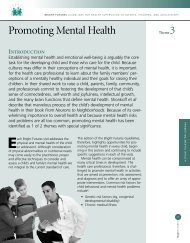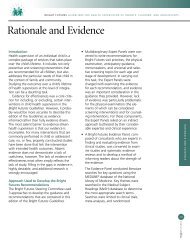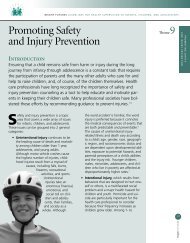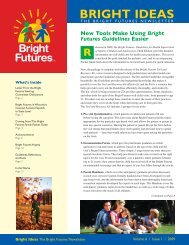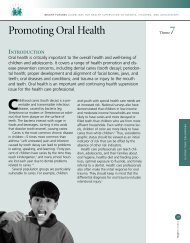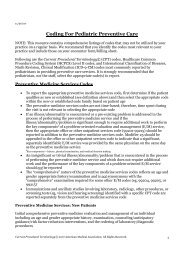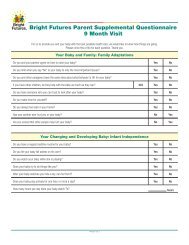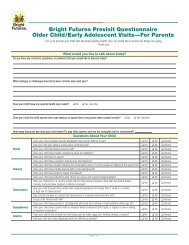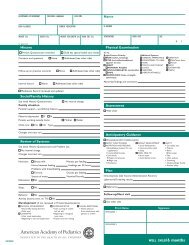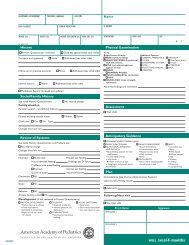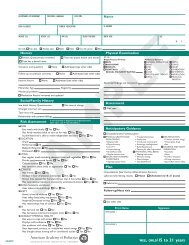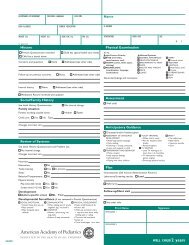POCKET GUIDE - Bright Futures - American Academy of Pediatrics
POCKET GUIDE - Bright Futures - American Academy of Pediatrics
POCKET GUIDE - Bright Futures - American Academy of Pediatrics
You also want an ePaper? Increase the reach of your titles
YUMPU automatically turns print PDFs into web optimized ePapers that Google loves.
Screening and Assessment<br />
■ if possible, observe the mother breastfeeding or either<br />
parent bottle-feeding the infant. Assess how comfortable<br />
the parent seems with feeding the infant, eye contact<br />
between the parent and the infant, the parent’s interaction<br />
with the infant, the parent’s and the infant’s responses<br />
to distractions in the environment, and the infant’s ability<br />
to suck.<br />
■ For breastfed and partially breastfed infants, determine<br />
whether the infant is receiving vitamin D supplementation.<br />
Anticipatory Guidance<br />
discuss with Parents <strong>of</strong> all infants<br />
■ Their infant’s increasing appetite during growth spurts,<br />
between ages 6 and 8 weeks.<br />
■ Forgoing foods other than breast milk or infant formula<br />
until their infant is developmentally ready (at about age<br />
4–6 months, when the sucking reflex changes to allow<br />
coordinated swallowing and the infant is sitting with<br />
support and has good head and neck control).<br />
■ helping their infant focus on feeding by rocking, patting,<br />
stroking, or swaddling the infant or feeding in a room<br />
with fewer distractions (lights, noise).<br />
■ indications <strong>of</strong> colic (crying inconsolably for several hours<br />
and passing a lot <strong>of</strong> gas). (if the mother is breastfeeding,<br />
recommend short, frequent feedings.)<br />
discuss with Parents <strong>of</strong> breastfed infants<br />
■ Their infant is getting enough milk if there are 6 to 8 wet<br />
diapers and 3 or 4 stools in 24 hours and the infant is gaining<br />
weight as expected.<br />
■ When appropriate, introducing a bottle by someone other<br />
than the mother when their infant is neither extremely<br />
hungry nor full and allowing the infant to explore the<br />
bottle’s nipple and put it in his mouth.<br />
discuss with Parents <strong>of</strong> formula-fed infants<br />
■ Feeding their infant on average 24 to 27 oz <strong>of</strong> formula, but<br />
the infant may consume 20 to 31 oz <strong>of</strong> formula in 24 hours.<br />
(infant needs to feed every 3–4 hours.)<br />
15<br />
<strong>Bright</strong> FUTURES<br />
Infancy



